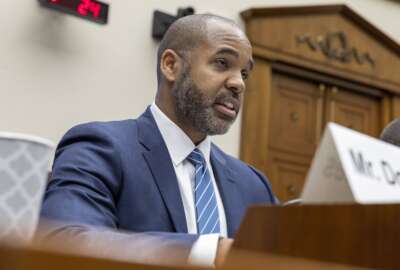Green gov movement powered by social media
Federal agencies are turning to web sites like Facebook, Twitter, and MySpace to reach out to the public regarding their mission. But many agencies have also turned...
wfedstaff | June 3, 2015 3:07 pm
By Max Cacas
Reporter
Federal News Radio
It would seem to be the proverbial “marriage made in heaven,” combining the power of social media like Facebook and Twitter, with President Obama’s mandate that the federal government be managed “greener” and with an eye toward environmental stewardship and energy efficiency.
That intersection was the topic of one of the final panel discussions at the White House Green Gov Symposium, which concluded yesterday at George Washington University.
By now, most feds are familiar with the SAVE awards, and how the White House used a simple web-submit form to let federal workers offer recommendations for ways to save money within the government. Katelin Sabochik with the White House New Media Office says the same technology used for the 2010 SAVE awards was adapted for use with the online component of the President’s Green Gov Challenge.
“Instead of submitting ideas, and just having them go into a ‘black box’, all the ideas were public. So you could submit an idea, it showed up on the website, and everyone could see what your idea was. They could vote for it, or against it, and say ‘this is a good idea, too’. We had a lot of federal employee participation. We had 5,000 ideas, and 14,000 federal employees participated, and 165,000 votes.”
Sabochik says the benefit of this technique was that it allowed the White House to see what ideas were the most popular and which ones were not so popular. She says a key to the success of the Green Gov Challenge is that federal workers were regularly reminded that they could participate right through the voting period.
Another panelist who came to connect the dots between green gov and social media is Steve Luzzi, with the U.S. Army Corps of Engineers, who also helps run FedCenter, a site focused on at providing online collaboration tools to staff from EPA and other agencies with compliance responsibilities when it comes to a number of environmental priorities.
Luzzi told the symposium how FedCenter provides what he calls “shared workspaces” or “private workgroups” where “green teams” from the Environmental Protection Agency and other agencies can collaborate.
“Folks use it for a lot of different purposes,” he explained, “sometimes they come to us because they have to host an event, and organize it, and so they’ll request that we provide private workspace for them to do those kinds of things.”
Luzzi said groups using FedCenter’s collaboration areas include groups working on the President’s Greenhouse Gas Accounting project, an Army regional sustainability network, and a collaboration between the EPA, and the military which is partnering on a chemical clean-up project.
Maritza Huerta with the U.S. Forest Service had a different story to tell. She says their strategy uses videos posted to YouTube as a large part of their social media plan, which has several goals.
“One is to increase awareness, we just want to educate both internal employee and external audiences. And also call to action, changing employee behavior.”
Huerta told the symposium that she and her colleagues learned one of the key lessons — some would say frustrations — of trying to use social media, the first time they uploaded an innocuous butterfly video to YouTube bypassing some of the proper channels.
“We really just wanted to stop talking about social media, and just dive in head first. So we bought our own video equipment, we didn’t go through the (Agriculture) department, and have them videotape our videos. And then we bought our own video editing software, and then we hired students like ourselves to just produce these videos.”
She says the approval process is where things got tricky, because despite the fact that the Forest Service had a social media guide and they received approval from the Forest Service’s communications department, “we were the first to post a video, and we were the first to get one taken down”.
Huerta explains that they ran afoul of Forest Service colleagues in field offices concerned that the Job Corps students depicted in the butterfly video were not using proper safety gear. And so she says since that time, they simply post a disclaimer regarding the use of safety equipment which appears to have satisfied the safety concerns of agency staffers.
Huerta adds that they’re continuing to experiment with YouTube, though she wryly suggests the 325 views they’ve picked up so far suggests that the Forest Service content isn’t going to go viral anytime soon.
(Copyright 2010 by FederalNewsRadio.com. All Rights Reserved.)
Copyright © 2025 Federal News Network. All rights reserved. This website is not intended for users located within the European Economic Area.





